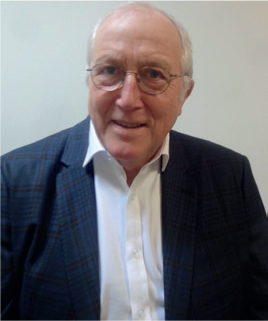Article

First, I hope that readers enjoyed the bumper 50th Anniversary issue. I am sure that it can be kept and used as a reference text for years to come, but I am probably biased! On reflection, while prevention was mentioned in a number of articles, there wasn't one specifically dedicated to the topic. It is therefore time to put that right.
F (fluoride), in its many presentations, from varnishes to mouthwashes, has been the bedrock of prevention/arrest of caries in dentistry, since the enquiring mind of Frederick McKay got to work in the early 1900s, when the then young dental school graduate opened a dental practice in Colorado Springs, CO, USA.1 There he discovered that many patients had dark brown stains on their teeth, but he was unable to ascertain the cause. Local residents blamed the problem on any number of factors, such as eating too much pork, consuming inferior milk, and drinking calcium-rich water. McKay therefore took up the gauntlet himself, his first breakthrough being when he invited Dr GV Black to Colorado. They initiated research into the disorder, their first discovery being that the brown teeth were resistant to caries, with GV Black continuing research on this until his death in 1915. Readers will know the rest of the story! McKay travelled to Idaho, where locals had started noticing brown stains on their children/s teeth, having started to pipe water from a warm spring 5 miles away. McKay suggested that residents abandon this water supply, and within a few years, the children had white permanent teeth. A similar occurrence took place in a town called Bauxite, where a chemist, HV Churchill, took an interest and analysed water samples, finding high levels of F in the towns where teeth were mottled. Readers will remember the name Dr H Trendley Dean from their first year dental studies, given that it was he, and others who investigated the optimum level of F in drinking water. This was the birth of community water fluoridation (CWF), but it had taken over 30 years from McKay's first suspicions.
Move on 50 years. Since fluoride was recognized as a caries preventive agent, some manufacturers added it to their dental materials, but the only effect that that had was, in my view, to help sell materials! The F word in those cases, stood for Fraud, Fiction, Fudge, or Fairies. Today, the only material that contains fluoride are glass ionomers (GICs) and its variants, with the literature divided on its cariostatic effect.2–4
Where is this going? Prevention still has not achieved the impetus that has been hoped for, possibly because governments across the world who fund dental services, have not found a way of remunerating it. It is much easier to count restorations placed! There is an easy way, however, which has not, in the recent past, achieved the recognition that it deserves, namely community water fluoridation (CWF). It is therefore my pleasure to introduce a guest editorial on CWF, which itself will act as an introduction to the subject that will be covered in this and subsequent issues. As well as providing a long overdue update on the current status of CWF, I hope that these articles will imbue readers with the enthusiasm needed to embrace CWF in the areas in which they practice, or better still, try to facilitate its introduction, particularly in areas where integrated care boards decide to move to public consultation on a public health measure with the potential to make a difference.
